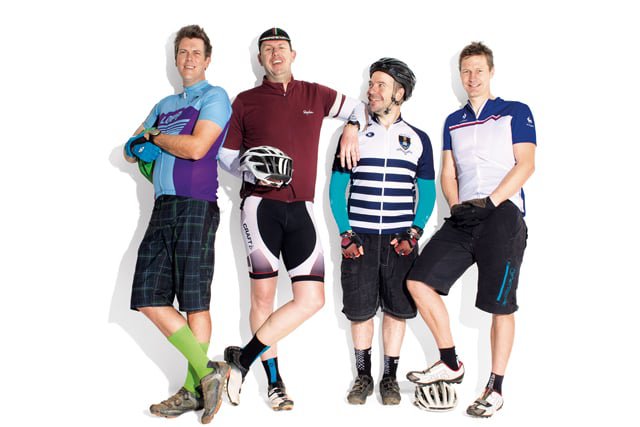Why You Should Embrace Your MAMIL Status
Are you a MAMIL? Whether you are going through a midlife crisis, or chasing your lost youth; embrace your status - it could save your life.
Are you a MAMIL? Whether you are going through a midlife crisis, or chasing your lost youth; embrace your status – it could save your life. – By Jonathan Ancer
In 2014, the word “MAMIL” was added to the Oxford Dictionary. The entry reads: Mamil n.: (Brit. informal) acronym: Middle-aged man in Lycra. A middle-aged man who is a very keen road cyclist, typically one who rides an expensive bike and wears the type of clothing associated with professional cyclists. What the Oxford Dictionary definition omits is that a Mamil is someone (yes, usually a man; but not strictly) who has become bike-bevok as the result of a midlife crisis.
Sound familiar?
Cycling has become the Mamil go-to sport because it provides the networking and social opportunities of golf, with the advantages of physical activity – and time: a ride doesn’t take as long as a round of golf (unless you get nine holes in each tyre). Devlin Eyden, a sports scientist at the High Performance Centre in Pretoria, says that in addition to the health benefits of regular exercise, another reason for the Mamil explosion is that cycling increases well-being, and is a confidence booster. “We tend to see our waistlines decrease, our joints become less creaky, and our attitudes improve,” he says.
Once the enjoyment factor takes a hold, your motivation to ride increases – so says Dr Paul Castle, a chartered sport and exercise psychologist at the University of Worcester in the UK, explaining the psychology driving the Mamil boom. “People start to monitor ride times or distances… and start to look at beating previous times, or increasing distances. Psychologically, motivation and emotion become the driving factors, and cycling becomes part of daily life.”
It’s a self-fulfilling, er, cycle: the faster and fitter you get, the more you enjoy it; the more you enjoy it, the more you ride; the more you ride, the faster and fitter you get (and so ad infinitum).
The psychology driving Mamils turns out to be ‘success’. Your sense of well-being fuels your motivation. It’s not about the Lycra; it is about the bike – or, more accurately, it’s about being on the bike. Dr Castle says that as Mamils become competitive, the psychology of cycling changes into something far more performance-orientated, and the recreational cyclist evolves into an amateur athlete.
A change in lifestyle is just a single pedal-revolution away.
[box]
Be A Fitter, Faster MAMIL
Mamils often get stuck in the ‘group ride’ syndrome, says the Sport Science Institute’s Dr Mike Posthumus. “Although group rides are a great way to get fit, from a performance perspective, riding too much tempo doesn’t have the same benefit as more polarised training.” And group rides can become a platform for Mamils to show off and push the pace too hard, he says, resulting in ride intensity far too high for adequate recovery. Devlin Eyden, sports scientist at the University of Pretoria’s High Performance Centre, offers Mamil-specific training tips:
Identify goals: Be it general fitness or finishing on the podium in your age category, it’s important to know what you’re setting out to achieve, in order to plan your training programme and ensure you make the most of the (limited) time you have to train.
Get the balance right: You must include both endurance-based work and high-intensity, interval-type training in your programme. This will get you strong enough to stay with the bunch or climb those tricky hills, as well as enabling you to keep going for longer.
Recovery is key: Whether you favour sports massage, stretching, compression garments or just good old-fashioned sleep, it’s vital to find a recovery solution that works for you. Mamils underestimate the importance of recovery; we feel we must train as hard as possible, as often as possible. This is to our detriment.
Food for thought: Nutrition ensures your body is always fuelled and ready to go for the next session, and helps you lose that unwanted stomach that tends to persist as we get older. One thing I need to stress: don’t think that because you’re trying to lose weight, you need to eat less. You still need to be fuelled.
Be strong: Strength training is key to your cycling performance. With age, muscle mass tends to decrease. Focus on whole-body workouts aimed at maintaining strength and improving performance. It’s also advisable to stretch, to ensure good range of motion and lower the risk of injury.[/box]
READ MORE ON: health lifestyle Skills training programmes


